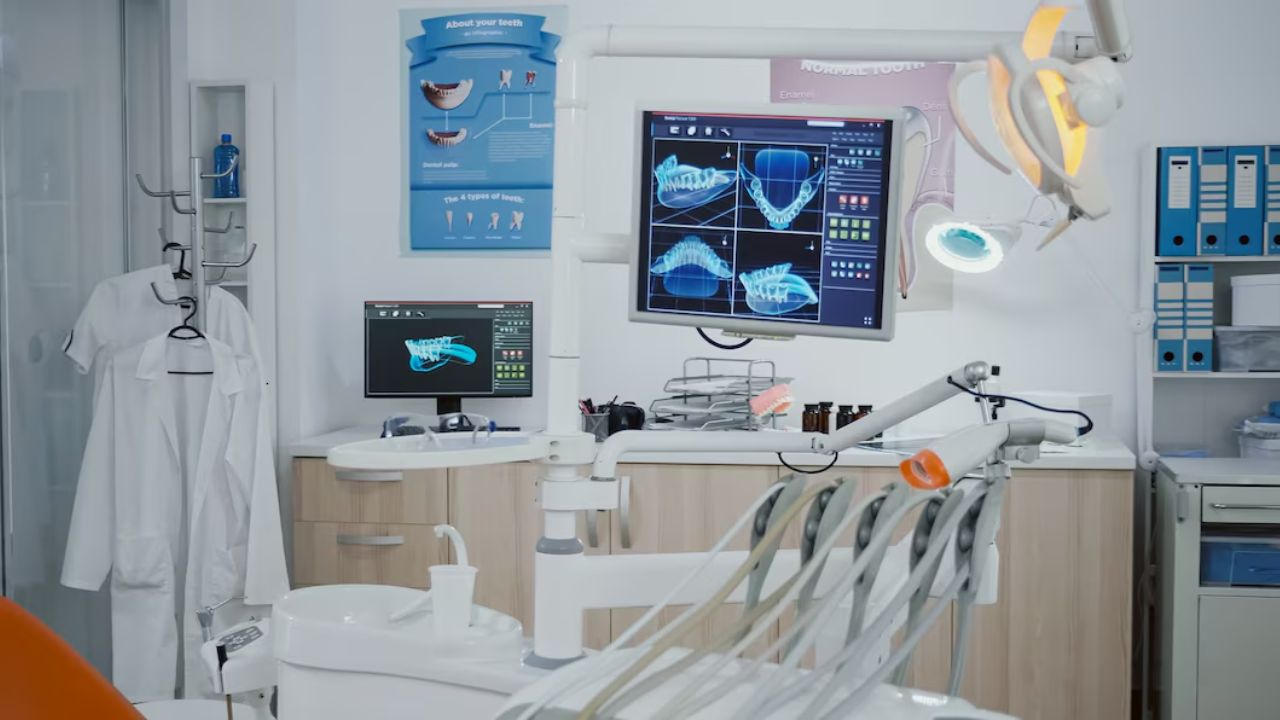In the realm of healthcare, quality assurance and patient safety are paramount concerns. The National Accreditation Board for Hospitals & Healthcare Providers (NABH) plays a crucial role in ensuring that healthcare facilities meet stringent standards to deliver high-quality care. At the same time, hospital planning forms the foundation upon which efficient healthcare services are built. This comprehensive guide delves into the intersection of NABH accreditation and hospital planning, exploring the intricate relationship between the two and their combined impact on the healthcare ecosystem.
Understanding NABH Accreditation
NABH accreditation is a testament to a healthcare facility’s commitment to providing quality care and adhering to established standards. It is a voluntary process that evaluates various aspects of healthcare delivery, including patient safety, infrastructure, clinical protocols, and management practices. Hospitals undergo rigorous assessments to demonstrate compliance with NABH’s stringent criteria, leading to improved outcomes and increased patient trust.
Key Components of NABH Accreditation
- Patient-Centric Care: NABH emphasizes patient-centric care, focusing on aspects such as patient rights, communication, and satisfaction. Hospitals must demonstrate effective communication channels, respect for patient preferences, and mechanisms for addressing grievances.
- Clinical Excellence: The accreditation process evaluates clinical processes, including diagnostic accuracy, treatment protocols, infection control measures, and medication safety. Hospitals must adhere to evidence-based practices, ensure staff competency, and maintain stringent quality control measures.
- Infrastructure and Safety: NABH assesses the physical infrastructure of hospitals, including facilities for patient care, sanitation, emergency preparedness, and environmental safety. Adequate infrastructure and safety protocols are crucial for delivering quality healthcare services.
- Management and Governance: Effective management and governance structures are essential for ensuring transparency, accountability, and continuous quality improvement. Hospitals must have robust policies, procedures, and risk management frameworks in place.
- Human Resource Management: NABH evaluates the competency, training, and qualification of healthcare professionals to ensure optimal patient care. Adequate staffing levels, skill development programs, and performance evaluations are key focus areas.
The Role of Hospital Planning in Achieving NABH Accreditation
Hospital planning is the strategic process of designing, organizing, and optimizing healthcare facilities to meet patient needs effectively. It encompasses various aspects, including architectural design, equipment planning, workflow optimization, and resource allocation. Effective hospital planning is instrumental in achieving NABH accreditation by creating an environment conducive to quality care delivery.

Integration of NABH Standards in Hospital Planning
- Architectural Design: Hospital buildings must comply with NABH standards regarding space utilization, patient flow, infection control measures, and accessibility. Architects and planners collaborate to design layouts that prioritize patient safety, efficient workflow, and optimal use of resources.
- Equipment and Technology: Hospital planning involves selecting and integrating medical equipment and technology that meet NABH requirements for accuracy, reliability, and safety. This includes medical devices, IT systems, diagnostic tools, and patient monitoring systems.
- Workflow Optimization: Efficient workflow design is critical for delivering timely and effective care. Hospital planners work with healthcare professionals to streamline processes, minimize wait times, and enhance communication channels, aligning with NABH’s emphasis on patient-centric care and clinical excellence.
- Resource Allocation: Adequate resource allocation is essential for meeting NABH standards related to staffing levels, training programs, infection control measures, and emergency preparedness. Hospital planners collaborate with management teams to allocate resources efficiently and ensure compliance with accreditation requirements.
Best Practices in Hospital Planning for NABH Accreditation
- Engage Stakeholders: Hospital planners should involve key stakeholders, including clinicians, administrators, architects, and engineers, from the early stages of planning. This collaborative approach ensures alignment with NABH standards and facilitates seamless implementation.
- Utilize Evidence-Based Design: Evidence-based design principles emphasize using research and data to inform design decisions. Hospital planners can leverage evidence-based design to create healing environments, enhance patient safety, and improve clinical outcomes, aligning with NABH’s focus on quality and safety.
- Embrace Technology: Incorporating technology solutions such as telemedicine, electronic health records (EHRs), and digital healthcare platforms can enhance efficiency, communication, and patient experience. Hospital planners should integrate technology strategically to support NABH accreditation goals.
- Continuous Monitoring and Improvement: Hospital planning is an ongoing process that requires continuous monitoring and improvement. Regular evaluations, feedback mechanisms, and quality audits help identify areas for enhancement and ensure sustained compliance with NABH standards.
Case Studies: Successful Integration of NABH Accreditation and Hospital Planning

Case Study 1: XYZ Hospital
XYZ Hospital, a multispecialty healthcare facility, embarked on a comprehensive hospital planning initiative to align with NABH accreditation standards. The hospital’s planning team collaborated with clinicians, architects, and management to redesign clinical workflows, upgrade infrastructure, and implement advanced technology solutions.
Key Strategies:
– Enhanced patient flow through streamlined triage and admission processes.
– Implemented electronic health records (EHRs) and telemedicine platforms for seamless information sharing and remote consultations.
– Upgraded infection control measures and sanitation protocols to meet NABH requirements.
– Conducted staff training programs focused on patient safety, communication skills, and clinical best practices.
Outcome:
XYZ Hospital achieved NABH accreditation within 18 months of implementing the hospital planning initiatives. The accreditation not only enhanced the hospital’s reputation but also led to improved clinical outcomes, higher patient satisfaction scores, and increased operational efficiency.
Case Study 2: ABC Medical Center
ABC Medical Center, a tertiary care hospital, underwent a major renovation and expansion project aimed at achieving NABH accreditation and enhancing patient care standards. The hospital’s planning team collaborated with international consultants and healthcare experts to redesign facilities and workflows.
Key Strategies:
– Redesigned critical care units and operation theaters to meet NABH standards for infrastructure and safety.
– Implemented advanced medical equipment and IT systems for accurate diagnosis and treatment.
– Established protocols for medication management, patient education, and infection control.
– Developed a comprehensive disaster management plan and conducted regular mock drills.
Outcome:
ABC Medical Center successfully obtained NABH accreditation and significantly improved patient outcomes across various specialties. The hospital’s investment in strategic hospital planning not only met accreditation requirements but also positioned it as a leader in quality healthcare delivery.
Challenges and Future Trends
While the integration of NABH accreditation and hospital planning offers numerous benefits, healthcare organizations face challenges in achieving and sustaining accreditation. These challenges include financial constraints, staff resistance to change, regulatory complexities, and evolving healthcare technologies. Overcoming these challenges requires a collaborative approach, ongoing training, and a commitment to continuous improvement.
Looking ahead, future trends in NABH accreditation and hospital planning are likely to focus on:
– Embracing digital health solutions such as artificial intelligence (AI), telehealth, and remote monitoring.
– Enhancing patient engagement and personalized care through data analytics and patient feedback mechanisms.
– Strengthening disaster preparedness and resilience in response to global health crises.
– Promoting sustainability and environmental stewardship in healthcare facility design and operations.
Architectural Design
Architectural design plays a pivotal role in the healthcare sector, particularly in the context of hospital planning and NABH accreditation. The design of healthcare facilities encompasses a range of considerations, from functionality and efficiency to patient comfort and safety. In this section, we’ll delve deeper into the key aspects of architectural design in healthcare settings and its intersection with NABH accreditation.

Principles of Architectural Design in Healthcare
- Patient-Centric Layouts: Healthcare facilities should be designed with a focus on patient comfort, privacy, and accessibility. This includes optimizing patient flow, minimizing walking distances, and ensuring clear wayfinding signage to reduce patient stress and enhance their overall experience.
- Infection Control Measures: Hospitals must integrate design elements that support infection control, such as proper ventilation systems, designated isolation areas, and easy-to-clean surfaces. These measures are crucial for preventing healthcare-associated infections and maintaining a safe environment for patients and staff.
- Safety and Emergency Preparedness: Architectural design should prioritize safety and emergency preparedness by incorporating features such as fire exits, emergency response stations, and evacuation routes. Hospitals must comply with building codes and standards to ensure the safety of occupants during emergencies.
- Efficient Workflow Design: Healthcare facilities require efficient workflows that facilitate seamless coordination among healthcare professionals, minimize wait times, and optimize resource utilization. Architectural design plays a key role in creating functional spaces that support efficient workflow patterns and interdisciplinary collaboration.
- Flexibility and Adaptability: Hospitals should be designed with flexibility and adaptability in mind to accommodate evolving healthcare needs, technological advancements, and changes in patient demographics. Modular design concepts, flexible room configurations, and scalable infrastructure enable hospitals to respond effectively to changing requirements over time.
NABH Accreditation and Architectural Design
NABH accreditation standards encompass several elements related to architectural design and infrastructure. Hospitals seeking accreditation must ensure that their facilities meet these standards to provide quality care and enhance patient safety. Here are some specific areas where architectural design intersects with NABH accreditation:
- Space Utilization: NABH standards require hospitals to optimize space utilization efficiently. This includes allocating adequate space for patient care areas, waiting rooms, corridors, and support services while ensuring compliance with safety and accessibility guidelines.
- Patient Privacy and Dignity: Architectural design should uphold patient privacy and dignity, as emphasized by NABH accreditation standards. Hospitals must incorporate features such as private patient rooms, designated consultation areas, and soundproofing measures to respect patient confidentiality and enhance their sense of dignity.
- Infection Control: NABH accreditation mandates strict infection control measures, which are reflected in the architectural design of healthcare facilities. Hospitals must design spaces with smooth surfaces, antimicrobial materials, and appropriate ventilation systems to minimize the risk of infections and ensure a hygienic environment.
- Accessibility: Hospitals must be accessible to patients with disabilities, elderly individuals, and those with mobility challenges. Architectural design should include ramps, elevators, handrails, and accessible restrooms to ensure equal access to healthcare services for all patients, aligning with NABH standards for accessibility and inclusivity.
- Emergency Preparedness: Architectural design plays a crucial role in supporting emergency preparedness and response efforts. Hospitals must have designated emergency exits, well-marked evacuation routes, and secure areas for critical care and triage during emergencies, meeting NABH requirements for safety and disaster management.
Innovative Trends in Architectural Design for Healthcare Facilities

- Technology Integration: Modern healthcare facilities are integrating technology into architectural design to enhance patient care and operational efficiency. This includes incorporating smart building systems, telemedicine hubs, digital wayfinding tools, and IoT-enabled devices to create connected and technologically advanced environments.
- Healing Environments: Architectural design is increasingly focused on creating healing environments that promote patient well-being and recovery. Elements such as natural light, green spaces, therapeutic gardens, and art installations are incorporated to reduce stress, improve patient outcomes, and create a positive healing atmosphere.
- Sustainable Design: Hospitals are adopting sustainable design practices to minimize environmental impact and promote sustainability. This includes energy-efficient building systems, water conservation measures, renewable energy sources, and eco-friendly materials, aligning with NABH’s emphasis on environmental stewardship and sustainability.
- Adaptive Reuse: Adaptive reuse of existing structures is gaining popularity in healthcare design, allowing hospitals to repurpose older buildings while preserving their architectural heritage. This approach promotes sustainability, cost-effectiveness, and creative use of space, especially in urban areas where land availability is limited.
- Wellness and Prevention: Architectural design is incorporating wellness and prevention strategies into healthcare facilities to promote healthy lifestyles and preventive care. This includes designing spaces for wellness programs, fitness centers, nutrition counseling, and lifestyle interventions to support holistic healthcare delivery and disease prevention.
Case Study: Innovative Architectural Design for NABH Compliance
The redevelopment of City General Hospital illustrates innovative architectural design strategies aligned with NABH accreditation requirements:
– Patient-Centric Design: The hospital implemented a patient-centric design approach with private rooms, comfortable waiting areas, and clear signage for easy navigation, enhancing the overall patient experience.
– Infection Control Measures: The architectural design included antimicrobial surfaces, hands-free fixtures, and advanced ventilation systems to minimize the risk of infections and ensure a hygienic environment, meeting NABH standards for infection control.
– Technology Integration: The hospital integrated smart building systems, electronic health records (EHRs), and telemedicine facilities into the design to support efficient workflow, enhance communication, and improve clinical outcomes, aligning with NABH requirements for technology integration.
– Sustainability Initiatives: Sustainable design elements such as energy-efficient lighting, water recycling systems, and green spaces were incorporated to promote environmental sustainability and align with NABH’s emphasis on sustainability and environmental stewardship.
– Emergency Preparedness: The architectural design included designated emergency response areas, secure evacuation routes, and disaster management protocols to ensure safety and compliance with NABH standards for emergency preparedness.
Future Directions in Architectural Design and NABH Accreditation

As healthcare evolves and technology advances, the intersection of architectural design and NABH accreditation will continue to evolve. Future trends in this domain may include:
– Virtual Design and Simulation: Virtual design tools and simulation technologies will enable architects and healthcare planners to visualize and optimize healthcare facilities before construction, ensuring compliance with NABH standards and enhancing design efficiency.
– Human-Centered Design: Architectural design will focus on human-centered principles, incorporating user feedback, patient preferences, and staff workflows to create environments that prioritize user experience, safety, and well-being.
– Data-Driven Design: Data analytics and performance metrics will inform architectural design decisions, allowing hospitals to track key indicators such as patient outcomes, operational efficiency, and resource utilization to continuously improve and maintain NABH accreditation.
– Collaborative Design Processes: Collaborative design processes involving multidisciplinary teams, including architects, healthcare professionals, patients, and community stakeholders, will promote innovation, creativity, and inclusivity in healthcare facility design, aligning with NABH’s emphasis on quality and patient-centric care.
Equipment and Technology
Equipment and technology are integral components of modern healthcare delivery, playing a crucial role in patient diagnosis, treatment, monitoring, and overall care. In the context of NABH accreditation and hospital planning, the selection, integration, and management of equipment and technology are paramount to meeting quality standards, enhancing clinical outcomes, and ensuring patient safety. This comprehensive guide explores the intersection of equipment, technology, and NABH accreditation within the framework of hospital planning.

Importance of Equipment and Technology in Healthcare
- Diagnostic Precision: Advanced medical equipment such as MRI machines, CT scanners, and laboratory analyzers enable healthcare providers to diagnose and assess patients accurately, leading to timely interventions and improved outcomes.
- Treatment Efficacy: Surgical tools, anesthesia machines, infusion pumps, and other medical devices support effective treatments, surgeries, and therapies, ensuring optimal patient care and recovery.
- Patient Monitoring: Monitoring devices like cardiac monitors, ventilators, and vital signs monitors allow healthcare professionals to track patients’ health status, vital parameters, and response to treatment, facilitating timely interventions and personalized care.
- Information Management: Electronic Health Records (EHRs), Picture Archiving and Communication Systems (PACS), and telemedicine platforms streamline information management, communication, and collaboration among healthcare teams, enhancing efficiency and continuity of care.
- Patient Engagement: Patient-facing technologies such as patient portals, mobile health apps, and wearable devices empower patients to actively participate in their healthcare journey, monitor their health metrics, and communicate with healthcare providers, promoting engagement and adherence to treatment plans.
Integration of Equipment and Technology in Hospital Planning
Hospital planning involves strategic decision-making regarding the selection, integration, maintenance, and utilization of equipment and technology to support clinical operations and meet quality standards, including those outlined by NABH accreditation. Key considerations in integrating equipment and technology in hospital planning include:

- Needs Assessment:
- Conducting a comprehensive needs assessment to identify the types of equipment and technology required based on clinical specialties, patient demographics, service offerings, and healthcare trends.
- Procurement and Acquisition:
- Collaborating with procurement teams, vendors, and manufacturers to acquire medical equipment and technology that meet quality standards, regulatory requirements, and budget constraints.
- Integration and Interoperability:
- Ensuring seamless integration and interoperability of equipment and technology systems within the hospital’s infrastructure, Electronic Medical Record (EMR) systems, and clinical workflows to enhance data exchange, decision-making, and care coordination.
- Training and Education:
- Providing training and education programs for healthcare professionals on the safe and effective use of equipment and technology, including protocols, maintenance procedures, and troubleshooting guidelines.
- Maintenance and Support:
- Implementing robust maintenance schedules, equipment calibration processes, and technical support mechanisms to ensure equipment reliability, performance, and compliance with regulatory standards.
- Lifecycle Management:
- Developing strategies for equipment lifecycle management, including asset tracking, upgrades, replacements, and disposal/recycling practices, to optimize resource utilization, cost-efficiency, and sustainability.
NABH Standards and Requirements for Equipment and Technology
NABH accreditation standards include specific criteria related to equipment and technology, focusing on quality assurance, safety, performance evaluation, and regulatory compliance. Hospitals seeking NABH accreditation must adhere to these standards in managing their equipment and technology infrastructure:

- Equipment Calibration and Maintenance: Hospitals must maintain records of equipment calibration, maintenance schedules, and performance evaluations to ensure accuracy, reliability, and safety of medical devices as per NABH standards.
- Safety Protocols: NABH emphasizes the implementation of safety protocols, including equipment safety checks, hazard identification, risk assessments, and incident reporting mechanisms to mitigate risks and ensure patient and staff safety.
- Quality Control Measures: Hospitals are required to establish quality control measures for equipment and technology, including regular inspections, adherence to manufacturer guidelines, infection control practices, and staff training on equipment usage and safety.
- Emergency Preparedness: NABH standards mandate hospitals to have contingency plans, backup systems, and emergency response protocols for equipment failures, power outages, and other disruptions to maintain continuity of care and patient safety.
- Regulatory Compliance: Hospitals must comply with regulatory requirements, certifications, and licensing for medical equipment, technology systems, radiation safety, biomedical waste management, and other relevant areas to meet NABH accreditation criteria.
Best Practices in Equipment and Technology Management for NABH Accreditation
- Comprehensive Inventory Management: Maintain a centralized inventory of all equipment and technology assets, including specifications, maintenance logs, service contracts, and compliance documentation, to ensure transparency, accountability, and regulatory compliance.
- Risk Assessment and Mitigation: Conduct regular risk assessments, hazard analyses, and equipment audits to identify potential risks, vulnerabilities, and non-compliance issues, and implement corrective actions and risk mitigation strategies proactively.
- Interdisciplinary Collaboration: Foster collaboration among clinical teams, biomedical engineers, IT specialists, and quality assurance personnel to align equipment and technology management practices with clinical workflows, patient safety goals, and NABH accreditation requirements.
- Continuous Monitoring and Improvement: Implement quality improvement initiatives, performance metrics, and feedback mechanisms to monitor equipment performance, user satisfaction, incident trends, and compliance metrics, and drive continuous improvement efforts.
- Adherence to Best Practices: Adhere to industry best practices, standards, guidelines, and benchmarking data from organizations such as ISO, FDA, AAMI, and AORN, and incorporate evidence-based practices into equipment and technology management protocols.
- Patient-Centric Approach: Prioritize a patient-centric approach in equipment and technology management by considering patient preferences, comfort, safety, and engagement in the design, selection, and utilization of medical devices and digital health solutions.
Workflow Optimization
Workflow optimization is a critical aspect of hospital planning and operations, directly impacting patient care quality, staff efficiency, and overall healthcare outcomes. In the context of NABH accreditation, optimizing workflows aligns with standards related to patient safety, clinical excellence, and operational efficiency. This section explores the importance of workflow optimization, key strategies, and its intersection with NABH standards.

Importance of Workflow Optimization in Healthcare
- Patient Safety: Streamlining workflows reduces errors, improves communication, and enhances coordination among healthcare teams, leading to better patient safety outcomes and reduced adverse events.
- Efficiency and Productivity: Optimized workflows eliminate bottlenecks, reduce wait times, and maximize resource utilization, allowing healthcare providers to deliver timely and effective care while improving staff productivity and satisfaction.
- Cost-Effectiveness: Efficient workflows minimize waste, unnecessary steps, and redundancies, resulting in cost savings, optimized resource allocation, and improved financial performance for healthcare organizations.
- Patient Experience: Well-organized workflows contribute to a positive patient experience by reducing wait times, improving communication, and ensuring seamless transitions between care settings, enhancing patient satisfaction and loyalty.
Strategies for Workflow Optimization
- Process Mapping: Conducting thorough process mapping exercises helps visualize and analyze current workflows, identify inefficiencies, redundancies, and opportunities for improvement.
- Standardization: Standardize workflows, protocols, and procedures across departments and specialties to ensure consistency, reduce variation, and promote best practices in patient care delivery.
- Team Collaboration: Foster interdisciplinary collaboration and communication among healthcare teams, including physicians, nurses, allied health professionals, and support staff, to streamline care coordination and improve patient outcomes.
- Technology Integration: Leverage technology solutions such as electronic health records (EHRs), clinical decision support systems, mobile apps, and communication tools to automate tasks, facilitate information sharing, and improve workflow efficiency.
- Training and Education: Provide ongoing training, education, and skills development programs for healthcare professionals to ensure competency in using technology, following standardized workflows, and adhering to best practices.
- Continuous Improvement: Implement quality improvement initiatives, feedback mechanisms, and performance metrics to monitor workflow effectiveness, identify areas for enhancement, and drive continuous improvement efforts.
Workflow Optimization and NABH Standards
Workflow optimization is closely aligned with several NABH accreditation standards, reflecting the importance of efficient processes, patient-centered care, and continuous quality improvement. Key areas where workflow optimization intersects with NABH standards include:

- Patient-Centric Care: NABH emphasizes patient-centric care, which requires optimized workflows that prioritize patient safety, communication, and satisfaction throughout the care continuum.
- Clinical Excellence: Efficient workflows support clinical excellence by ensuring timely interventions, accurate documentation, evidence-based practices, and seamless care transitions, aligning with NABH standards for clinical processes and outcomes.
- Safety and Infection Control: Optimized workflows contribute to safety and infection control by minimizing errors, reducing infection risks, and ensuring compliance with protocols for medication administration, hygiene practices, and patient isolation, as per NABH requirements.
- Staff Competency: Workflow optimization includes training programs, competency assessments, and clear protocols for healthcare professionals, supporting NABH standards related to staff education, training, and performance evaluation.
- Documentation and Record Keeping: Streamlined workflows improve documentation accuracy, completeness, and accessibility, essential for meeting NABH standards for medical records, information management, and data security.
Best Practices for Workflow Optimization and NABH Compliance
- Engage Stakeholders: Involve key stakeholders, including clinicians, administrators, IT professionals, and frontline staff, in workflow optimization initiatives to ensure buy-in, collaboration, and alignment with NABH standards.
- Use Evidence-Based Practices: Base workflow optimization decisions on evidence-based practices, clinical guidelines, and benchmarking data to drive improvements in patient outcomes, safety, and satisfaction, in line with NABH’s emphasis on quality and efficacy.
- Utilize Technology Wisely: Leverage technology solutions strategically to automate routine tasks, improve data accuracy, facilitate communication, and enhance clinical decision-making, supporting NABH standards for technology integration and information management.
- Implement Checklists and Protocols: Develop standardized checklists, protocols, and care pathways to guide healthcare teams through workflows, reduce variability, and ensure adherence to best practices, aligning with NABH requirements for standardized processes and documentation.
- Monitor and Evaluate: Establish performance metrics, monitor key performance indicators (KPIs), and conduct regular audits and reviews to assess workflow effectiveness, identify areas for improvement, and demonstrate compliance with NABH standards for quality monitoring and continuous improvement.
Case Study: Successful Workflow Optimization for NABH Accreditation
Case Study: City General Hospital
City General Hospital implemented a comprehensive workflow optimization strategy to achieve NABH accreditation:
– Process Mapping: Conducted detailed process mapping exercises across departments to identify workflow bottlenecks, inefficiencies, and opportunities for improvement.
– Standardization: Standardized clinical protocols, documentation templates, and communication channels to ensure consistency, reduce errors, and improve care coordination.
– Technology Integration: Integrated EHRs, clinical decision support systems, and mobile apps into workflows to automate tasks, facilitate information sharing, and improve data accuracy.
– Staff Training: Provided extensive training programs, competency assessments, and skills development initiatives for healthcare professionals to ensure proficiency in using technology and following standardized workflows.
– Continuous Improvement: Implemented quality improvement initiatives, regular audits, and performance monitoring to track progress, identify areas for enhancement, and drive ongoing workflow optimization efforts.
Outcome: City General Hospital achieved NABH accreditation with a strong focus on workflow optimization, resulting in improved patient safety, clinical outcomes, staff efficiency, and overall healthcare quality.
Challenges and Future Trends
Workflow optimization initiatives may face challenges such as resistance to change, resource constraints, interoperability issues, and evolving healthcare technologies. Overcoming these challenges requires leadership commitment, staff engagement, investment in training and technology, and a culture of continuous improvement.
Looking ahead, future trends in workflow optimization and NABH compliance may include:
- Artificial Intelligence (AI) and Automation: AI-powered tools, robotic process automation (RPA), and predictive analytics will automate routine tasks, optimize decision-making, and improve workflow efficiency, supporting NABH’s emphasis on quality, safety, and efficiency.
- Telehealth and Virtual Care: Expansion of telehealth services, virtual consultations, and remote monitoring platforms will transform care delivery models, streamline workflows, and enhance access to healthcare, aligning with NABH standards for patient-centered care and accessibility.
- Interoperability Solutions: Enhanced interoperability standards, health information exchanges (HIEs), and seamless data sharing protocols will promote care coordination, information exchange, and integrated care delivery, supporting NABH’s requirements for continuity of care and information management.
- Patient Engagement Technologies: Adoption of patient engagement technologies such as mobile apps, patient portals, and self-service kiosks will empower patients, improve communication, and streamline administrative workflows, aligning with NABH’s focus on patient empowerment and satisfaction.
Resource Allocation
Resource allocation in healthcare is a critical aspect of hospital planning and management, encompassing the efficient distribution and utilization of resources such as personnel, finances, equipment, facilities, and time. Effective resource allocation is essential for achieving organizational goals, delivering quality patient care, and ensuring operational sustainability. In the context of NABH accreditation, resource allocation practices play a crucial role in meeting accreditation standards related to patient safety, clinical excellence, and operational efficiency. This section explores the importance of resource allocation, key strategies, and its intersection with NABH standards.

Importance of Resource Allocation in Healthcare
- Optimal Patient Care: Efficient resource allocation ensures that patients receive timely and appropriate care, with access to necessary medical services, treatments, and interventions based on their needs and clinical requirements.
- Financial Sustainability: Strategic resource allocation helps healthcare organizations optimize financial resources, minimize waste, control costs, and achieve financial sustainability while maintaining high-quality care delivery.
- Staffing and Skill Utilization: Allocating personnel effectively ensures adequate staffing levels, appropriate skill mix, and optimal utilization of healthcare professionals, leading to improved staff satisfaction, productivity, and patient outcomes.
- Infrastructure and Equipment: Proper allocation of infrastructure, equipment, and technology supports smooth operations, enhances clinical workflows, and enables efficient delivery of healthcare services, contributing to patient safety and satisfaction.
- Time Management: Efficient time management through resource allocation ensures that healthcare providers can prioritize tasks, minimize delays, and focus on delivering quality care, enhancing overall patient experience and outcomes.
Strategies for Resource Allocation
- Needs Assessment: Conduct a comprehensive needs assessment to identify resource requirements based on patient population, clinical services, volume of care, and organizational goals, aligning resource allocation strategies with strategic objectives.
- Priority Setting: Prioritize resource allocation based on urgency, clinical significance, patient acuity, and expected outcomes, ensuring that critical resources are allocated where they are most needed to maximize impact and value.
- Data-Driven Decision Making: Utilize data analytics, performance metrics, and evidence-based practices to inform resource allocation decisions, identify areas for improvement, and optimize resource utilization for better patient care and operational efficiency.
- Resource Matching: Match resources to patient needs and care requirements, ensuring that the right resources are available at the right time and place, minimizing delays, errors, and inefficiencies in care delivery.
- Flexibility and Adaptability: Maintain flexibility and adaptability in resource allocation processes to respond to changing patient demands, emerging healthcare trends, technological advancements, and external factors that may impact resource availability and utilization.
Resource Allocation and NABH Standards
Resource allocation practices are closely aligned with several NABH accreditation standards, reflecting the importance of efficient resource utilization, patient safety, and quality care delivery. Key areas where resource allocation intersects with NABH standards include:
- Infrastructure and Facilities: NABH standards require healthcare facilities to allocate resources effectively for infrastructure development, maintenance, and enhancement, ensuring compliance with safety, accessibility, and infection control guidelines.
- Human Resource Management: Effective resource allocation in staffing, training, and skill development supports NABH standards for human resource management, ensuring adequate staff levels, competency, and satisfaction to deliver quality care.
- Equipment and Technology: Proper allocation of equipment, technology, and medical devices supports NABH standards for equipment safety, functionality, and maintenance, contributing to patient safety, clinical excellence, and operational efficiency.
- Financial Management: Sound resource allocation practices in financial management, budgeting, and cost control align with NABH standards for financial sustainability, accountability, and transparency in healthcare organizations.
- Emergency Preparedness: Resource allocation for emergency preparedness, disaster management, and response planning meets NABH standards for emergency and disaster readiness, ensuring timely and effective responses to crises and emergencies.
Best Practices for Resource Allocation and NABH Compliance
- Strategic Planning: Develop a strategic resource allocation plan aligned with organizational goals, patient needs, regulatory requirements, and accreditation standards, integrating input from key stakeholders and departments.
- Transparent Processes: Establish transparent resource allocation processes, criteria, and decision-making frameworks, ensuring fairness, accountability, and stakeholder engagement in resource allocation decisions.
- Continuous Monitoring: Monitor resource utilization, performance metrics, and outcomes regularly, conduct audits, and reviews to assess the effectiveness of resource allocation strategies, identify areas for improvement, and drive continuous quality improvement efforts.
- Staff Training and Development: Invest in staff training, education, and development programs to enhance skills, knowledge, and competencies related to resource allocation, budget management, and cost-effective care delivery, supporting NABH standards for staff competency and education.
- Technology Integration: Leverage technology solutions such as healthcare analytics, decision support tools, and performance dashboards to optimize resource allocation, track key performance indicators (KPIs), and make data-driven decisions for better patient care and operational efficiency.
Case Study: Successful Resource Allocation for NABH Accreditation
Case Study: ABC Medical Center
ABC Medical Center implemented successful resource allocation strategies to achieve NABH accreditation:
– Needs Assessment: Conducted a comprehensive needs assessment to identify resource gaps, patient care requirements, and operational priorities, aligning resource allocation strategies with NABH standards and organizational goals.
– Priority Setting: Prioritized resource allocation based on patient acuity, clinical urgency, quality indicators, and regulatory requirements, ensuring that critical resources were allocated where they were most needed for optimal patient outcomes.
– Data-Driven Decisions: Utilized data analytics, performance metrics, and benchmarking data to inform resource allocation decisions, track resource utilization, and identify opportunities for improvement, supporting continuous quality improvement efforts and NABH compliance.
– Staff Training: Invested in staff training, education, and development programs to enhance skills, competencies, and knowledge related to resource allocation, budget management, and cost-effective care delivery, aligning with NABH standards for staff education and competency.
– Continuous Improvement: Established processes for continuous monitoring, performance evaluation, and feedback mechanisms to assess resource allocation effectiveness, identify areas for enhancement, and drive ongoing quality improvement initiatives, resulting in improved patient care outcomes and NABH accreditation success.
Challenges and Future Trends
Resource allocation in healthcare faces challenges such as budget constraints, competing priorities, workforce shortages, technological complexities, and evolving patient needs. Overcoming these challenges requires strategic planning, stakeholder collaboration, data-driven decision-making, and a culture of continuous improvement.
Looking ahead, future trends in resource allocation and NABH compliance may include:
- Value-Based Care: Shift towards value-based care models, bundled payments, and population health management, emphasizing efficient resource allocation, cost-effective care delivery, and patient-centered outcomes.
- Telehealth and Digital Health: Expansion of telehealth services, digital health platforms, and remote monitoring technologies, enabling virtual care delivery, optimizing resource utilization, and enhancing patient access to healthcare services.
- Predictive Analytics: Adoption of predictive analytics, machine learning algorithms, and decision support tools to forecast patient needs, optimize resource allocation, and improve clinical outcomes while ensuring compliance with NABH standards.
- Interoperability Solutions: Enhanced interoperability standards, health information exchanges (HIEs), and integrated care platforms to promote seamless data sharing, care coordination, and resource optimization across healthcare settings, supporting NABH requirements for integrated care and information management.
Conclusion
Resource allocation is a fundamental aspect of healthcare management and NABH accreditation, influencing patient care quality, operational efficiency, and organizational performance. Hospitals must prioritize strategic resource allocation, data-driven decision-making, staff training, and continuous improvement efforts to achieve NABH compliance and deliver high-quality, cost-effective healthcare services. By embracing best practices, leveraging technology solutions, and fostering a culture of collaboration and innovation, healthcare organizations can optimize resource utilization, enhance patient outcomes, and maintain accreditation excellence in a dynamic healthcare landscape.


